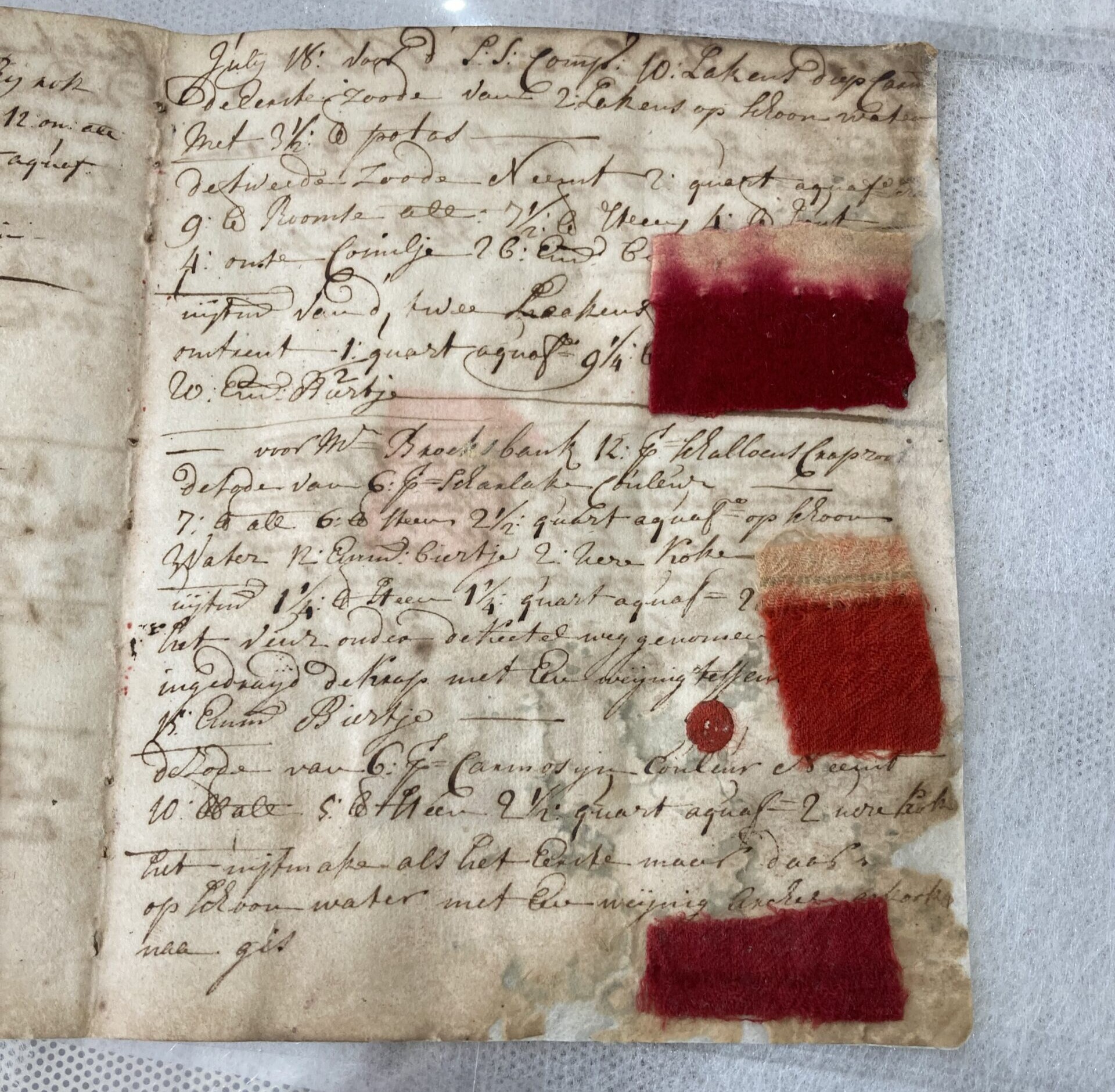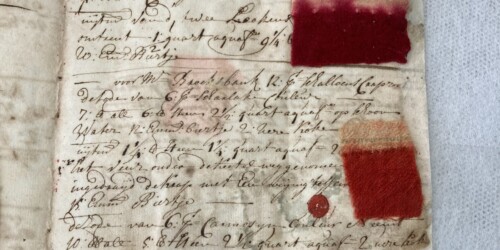
We have recently completed a very exciting combined paper and textile conservation project: important dye recipe books dating from 1716-1744, part of the Crutchley Archive held by Southwark Council Archive. The set of 15 books has such significance as a dye record that it was put on the UK Memory of the World Register in 2020.
These incredible books contain dye recipes in English and Flemish and many have their wool samples still attached. However, due to a combination of the degrading paper, mould, damp and damaged attachment methods many of the wool samples had fallen out from their right places in the recipe books. We were able to relocate some by matching up their unique wax seal and lozenge stains and reattach them, but we’ve only done this where we were completely sure of the evidence. The remaining samples needed to be held safe in enclosures – hopefully one day researchers will be able to work with dye analysis methods to match them back up with their original recipes.
In a project spanning several years either side of the pandemic, our paper and textile conservators have cleaned and conserved three of the very fragile volumes as well as undertaken their detailed digitisation. After irradiation to treat the active mould, mould and dust was carefully removed using vacuum suction techniques. The delicate paper has been supported on Japanese tissue using combination inlay and overlay techniques utilising our suction table after which the textile samples were reattached. Repairs had to be designed to not obscure any of the text of the hand written recipes whilst also strengthening the pages enough to support the weight of the wool samples when the pages were turned. Many of the pages were still left too weak to be re-bound due to the weight of the samples so a safe conservation housing was then expertly made by colleague Bridget Mitchell of Arca Conservation.
Earlier this year, Minny spent her last few days at work before heading off on maternity leave finishing off the repair and digitisation of the three volumes being focussed on in phase one of the conservation project. She also made polyester enclosures for the loose dye samples that could not be reattached creating heat sealed divisions in the polyester film to hold each sample flat and safe.
In the months since, Geoffrey has worked to complete a series of paper fascicules and differently sized folders to hold each of the sections of the most complex dye sample book safe, flat and in the correct order in Bridget’s boxes.
The project has been kindly supported by the National Manuscripts Conservation Fund.

Image 1 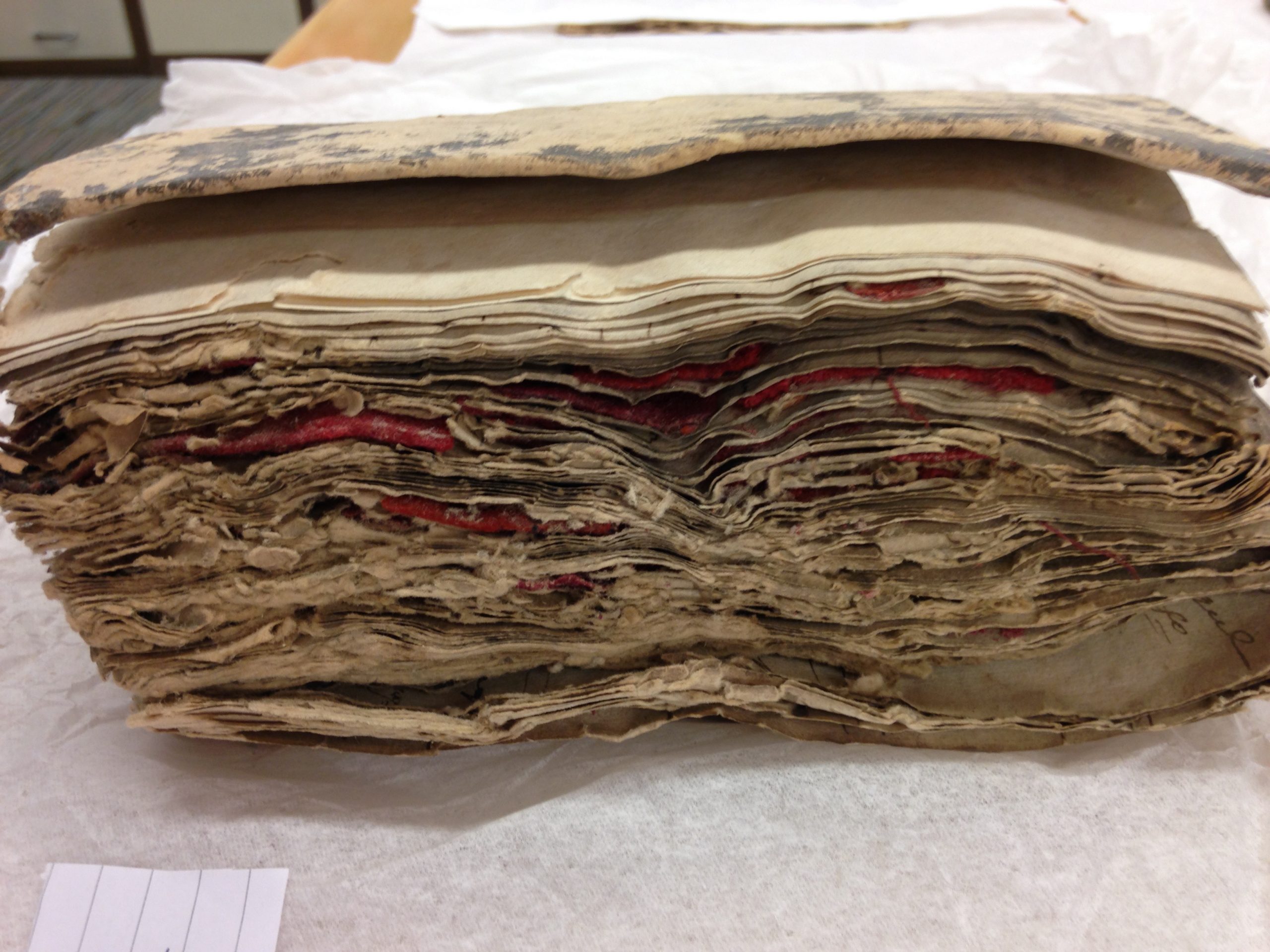
Image 2 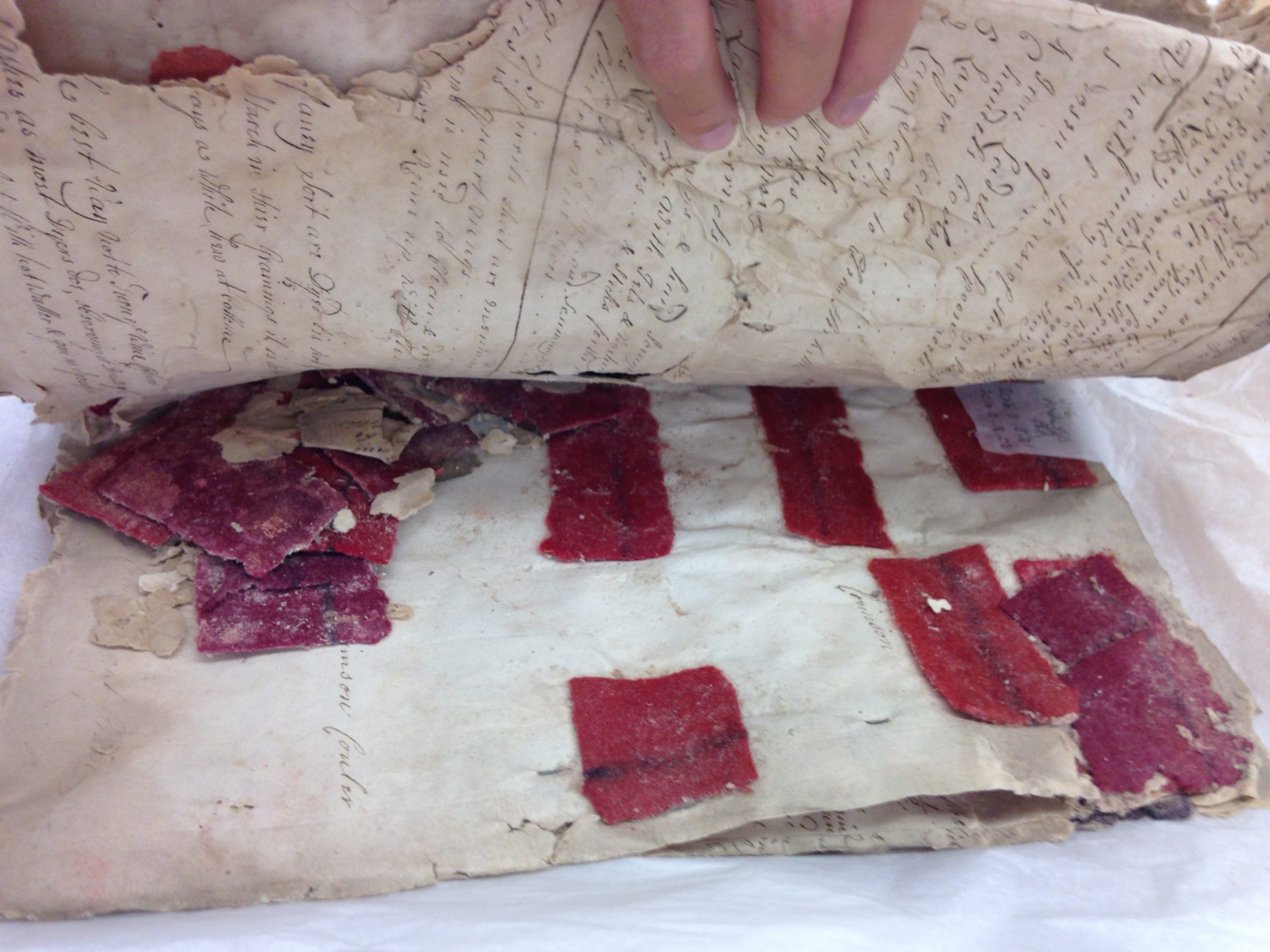
Image 3 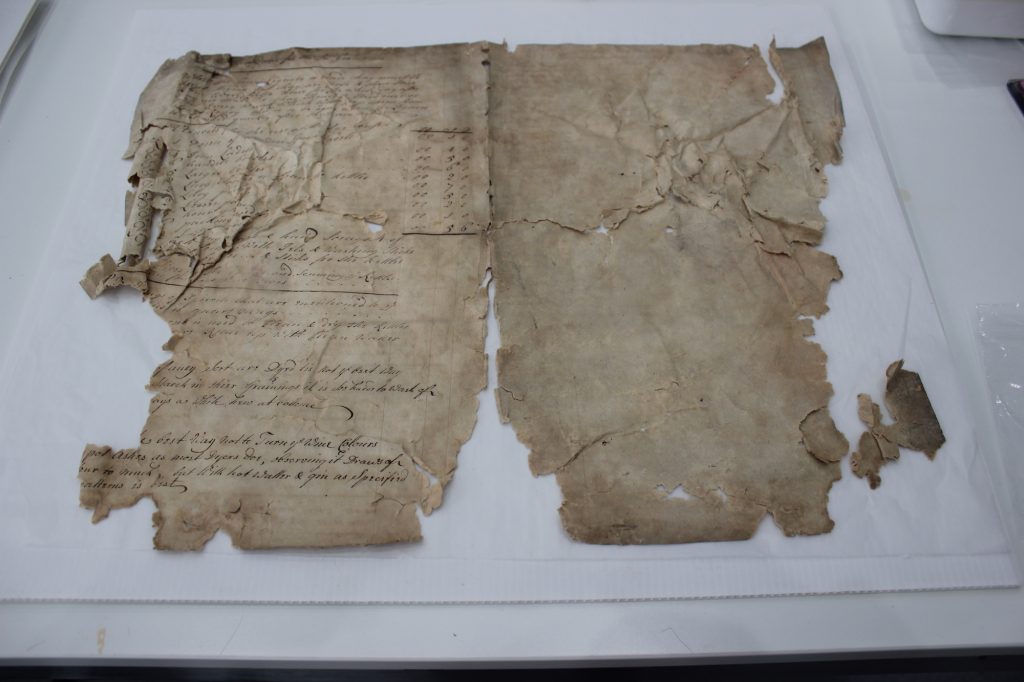
Image 4 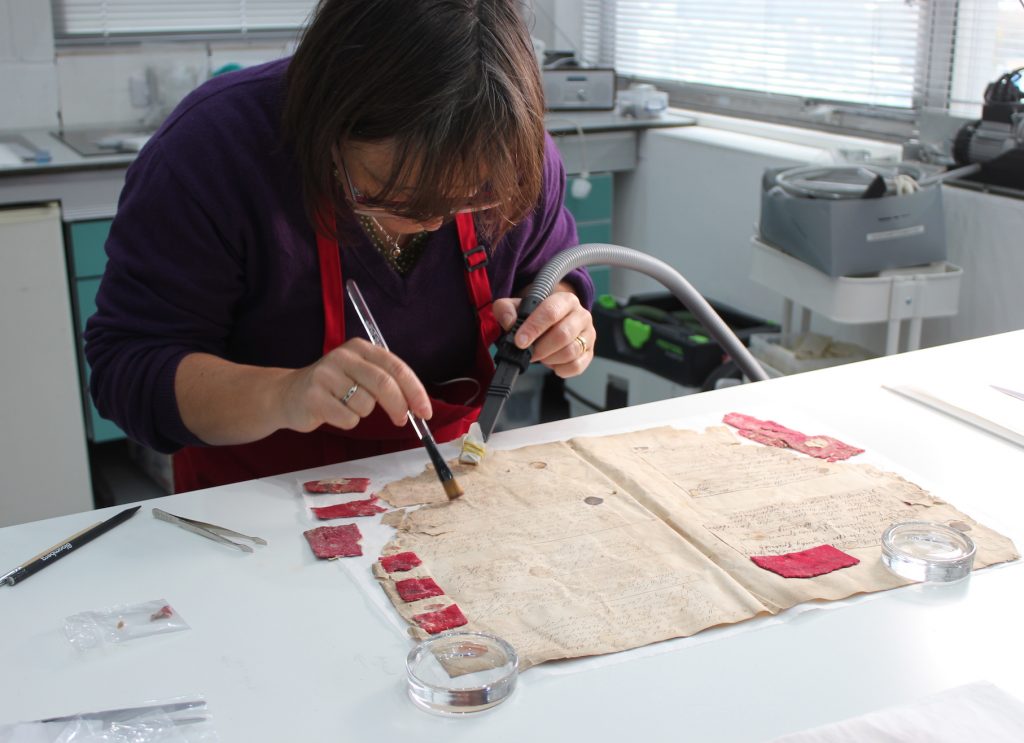
Image 5 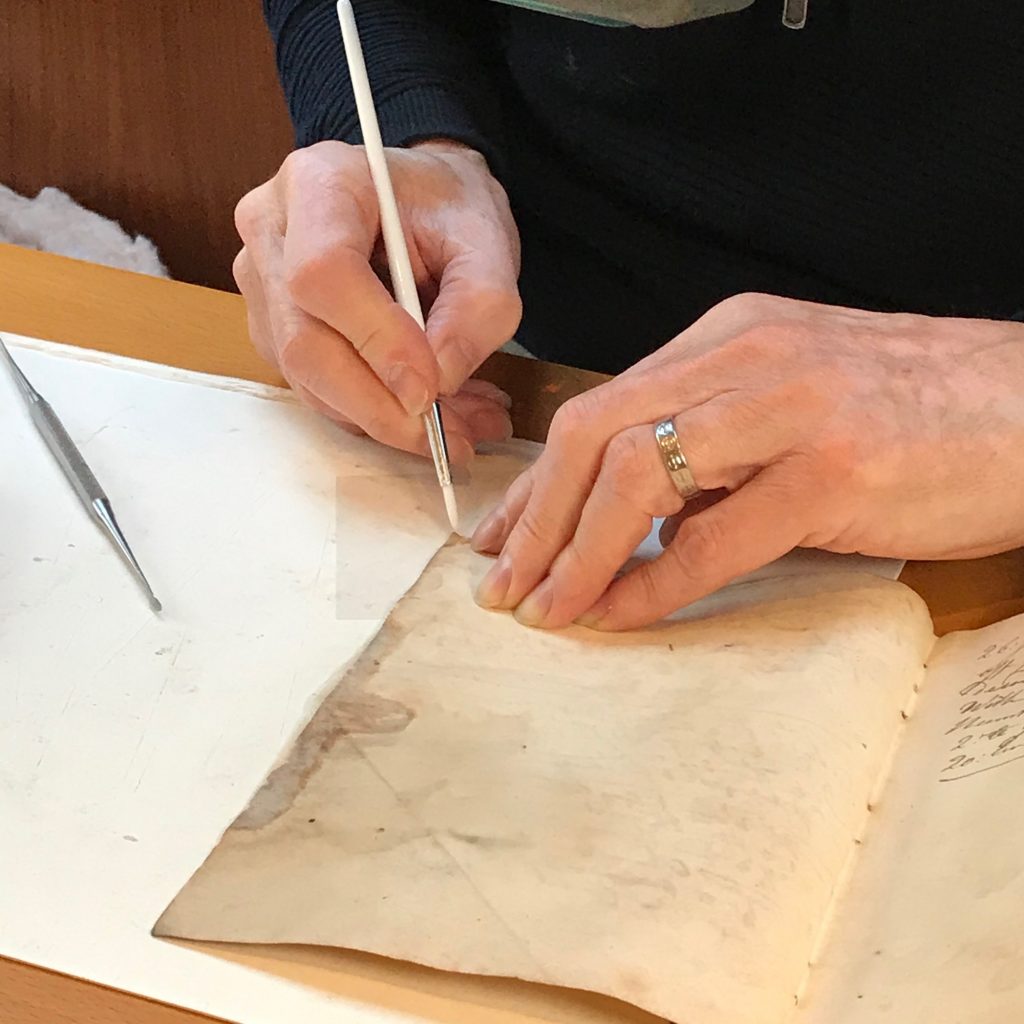
Image 6 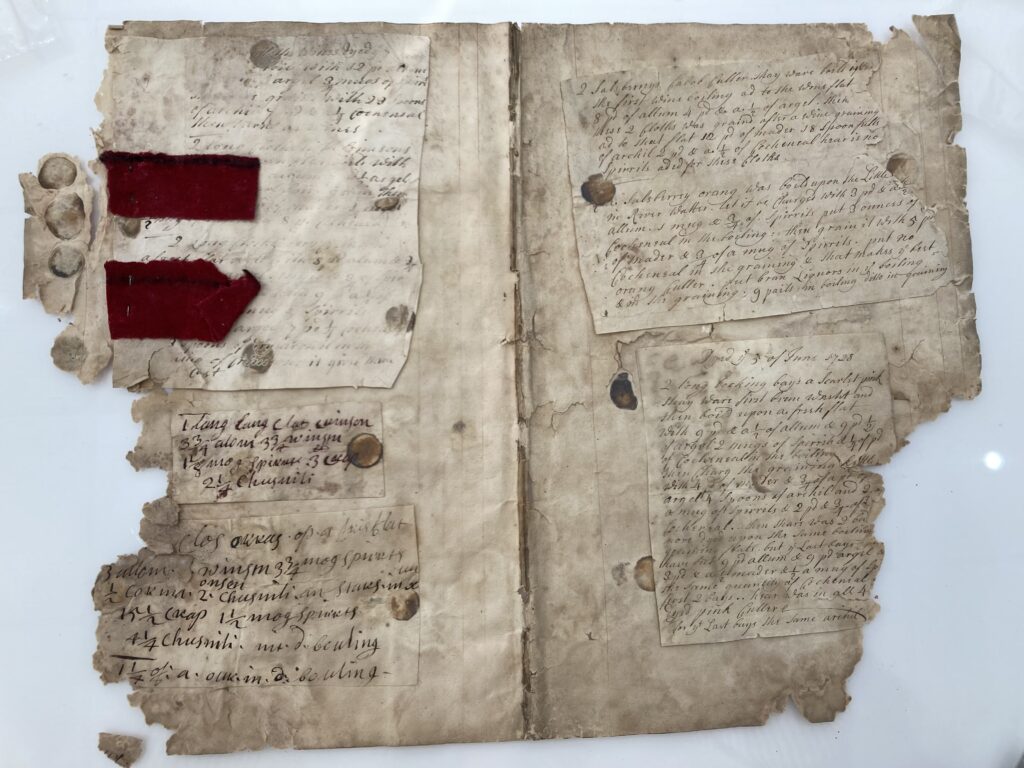
Image 7 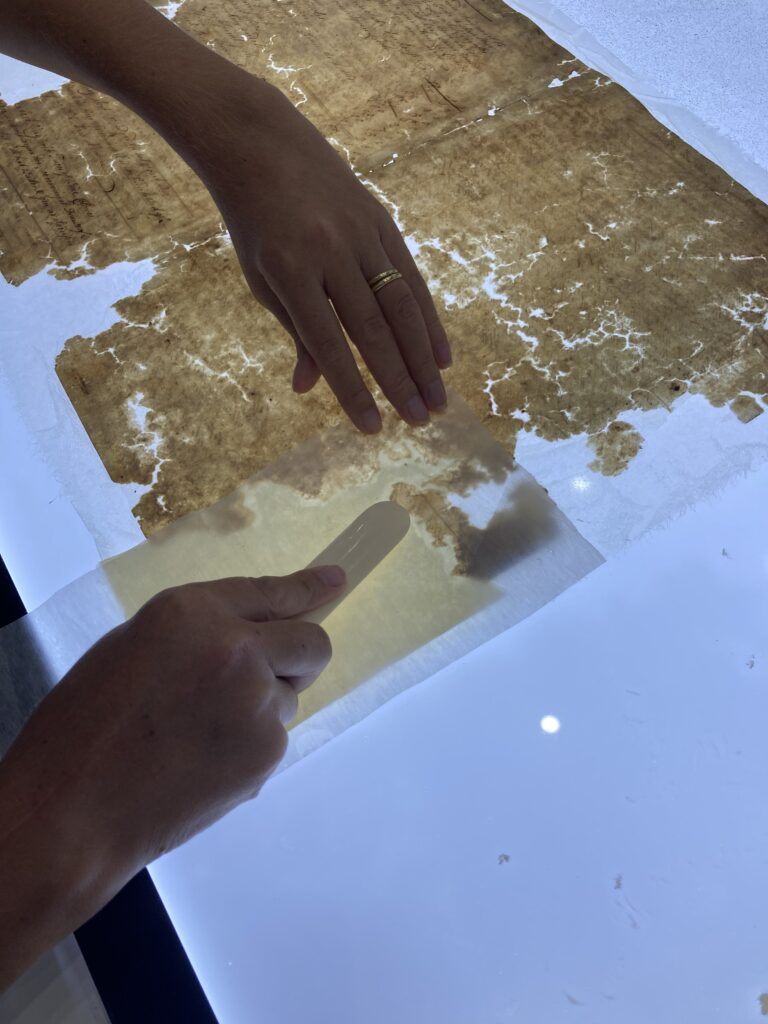
Image 8 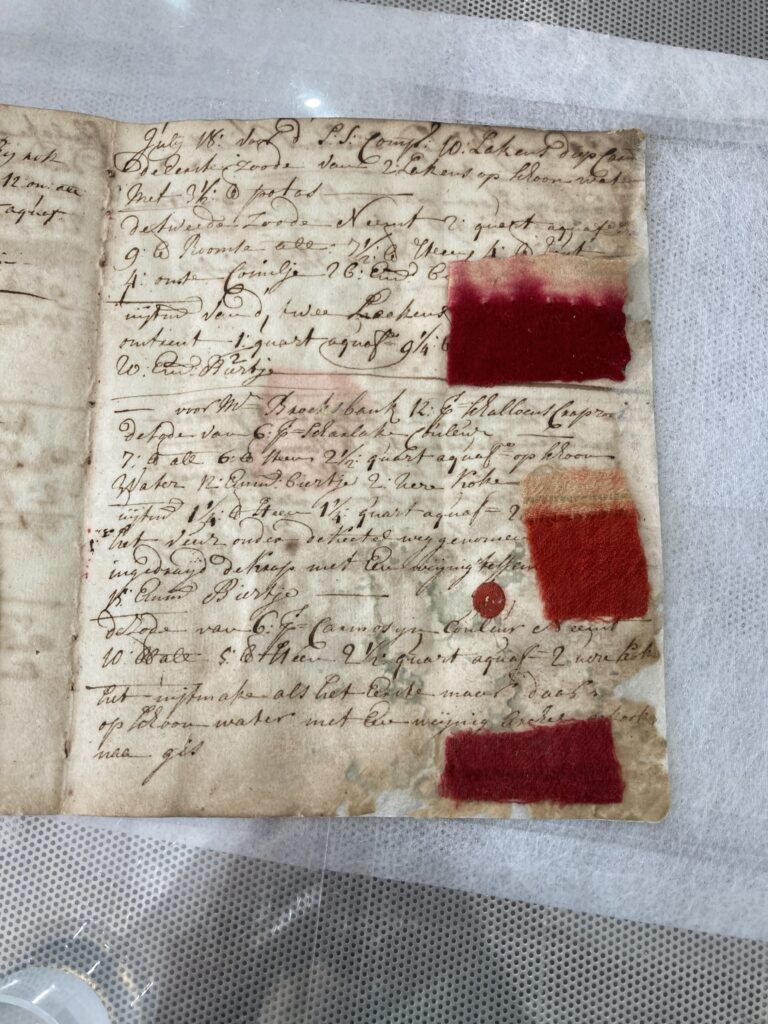
Image 9 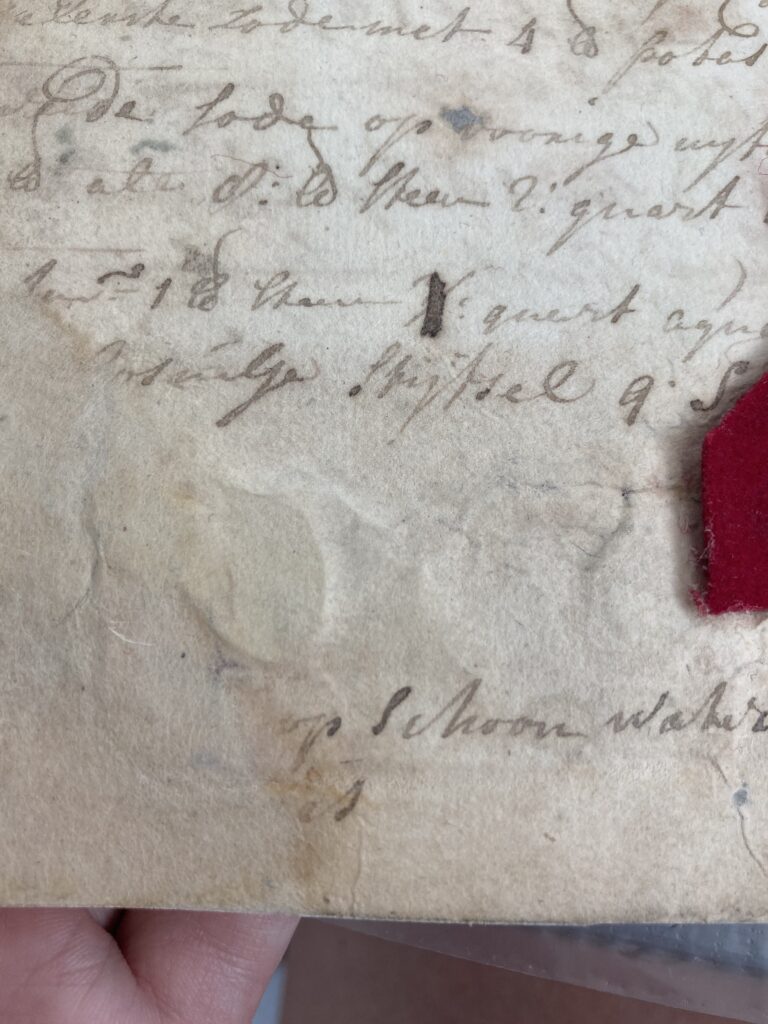
Image 10 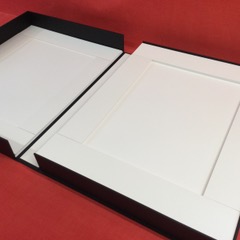
Image 11 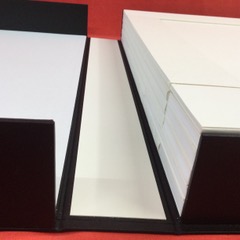
Image 12
